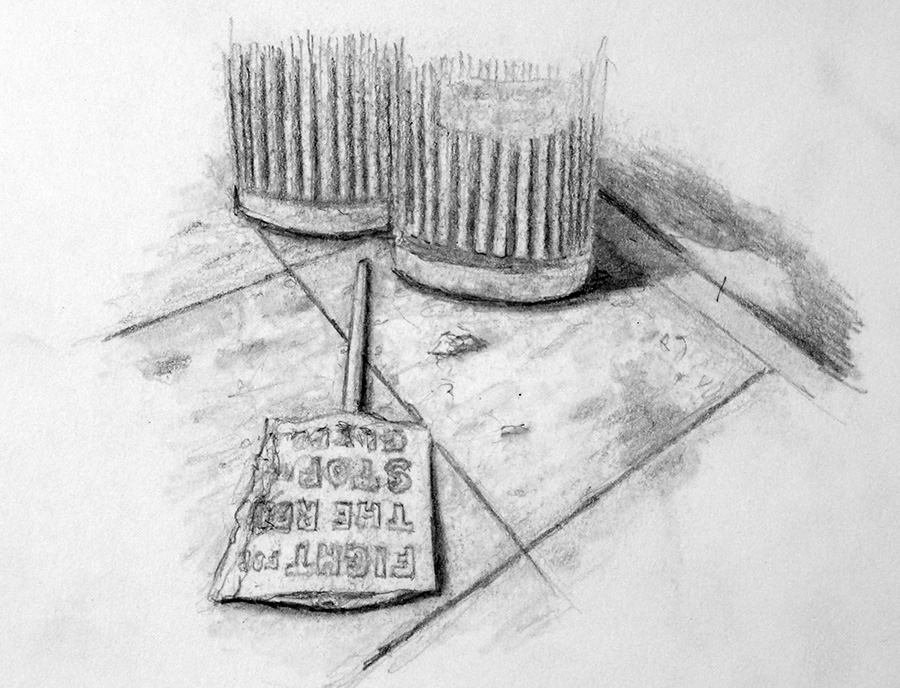
I walk along 14th Street after a talk at the New School. A rally against the policies of the Trump administration has just finished in Union Square, and I pass by small groups of protesters walking in the other direction carrying handmade signs. Later, inside the supermarket, I’m behind an older woman in line clad in hippy-ish garb; she too carries a sign, this one printed and laminated (but well-worn, as if it’s been deployed in many recent protests). I’m struck by how different these signifiers function inside and outside of a public gathering/protest. For a participant in a protest the sign functions not only as a token of membership in the group but a form of personal, even artistic, expression – and as such, helps establish an informal hierarchy among participants. Within the diversity of signage one can stand out by virtue of an especially clever or funny statement, bring attention not only to one’s cause, but to oneself. In this dynamic and largely-improvised context, the sign conveys almost a magical quality to its bearer, connecting him/her to larger political issues, policy positions, subversive strategies, anarchic principles, etc. But once the protester steps outside this enchanted realm of the protest, the sign seems to lose its magic. The people I’ve passed by on the sidewalk are, in all likelihood, looking for a convenient spot to toss their spent signs (indeed there are several trash bins stuffed with the cardboard wreckage of signs); the woman in the supermarket, still carrying hers, has a kind of washed-ashore look, like she’s stepped off the train at the wrong station.
Leave a comment